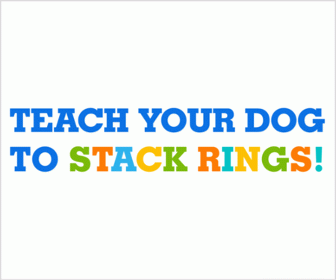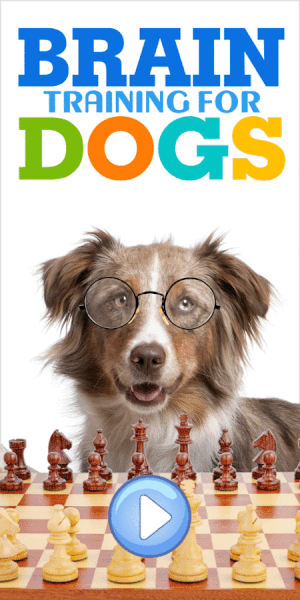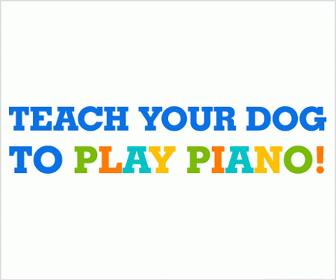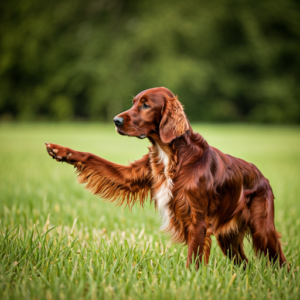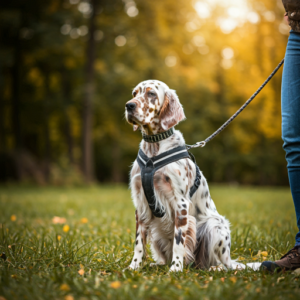Dog aggression is a complex behavior that can present itself in various forms such as growling, snapping, or even biting. The Irish Setter, known for its energetic and friendly disposition, as most dogs is not immune to these behaviors. Recognizing the signs of aggression early is crucial in preventing escalation, safeguarding both the dog and those around it. Learning how to socialize an aggressive dog with humans is key to addressing these issues, as understanding the underlying causes is the first step in resolving the problem effectively.
Table of Contents
For Irish Setters, aggression often stems from a combination of factors. While these dogs are typically friendly and affectionate, a lack of socialization, past trauma, or negative experiences can trigger defensive behavior. Additionally, fear, territorial instincts, and frustration can contribute to their aggressive reactions. Identifying the root cause of aggression is paramount because it allows for a more targeted and effective solution. For instance, an Irish Setter’s aggressive behavior might be linked to specific triggers, such as unfamiliar people or loud noises, or it could be a sign of a deeper emotional issue that requires specialized attention.
When dealing with aggression, it’s essential to act quickly. Allowing aggressive behavior to persist can lead to more serious consequences, such as physical harm to others or the dog itself. Early intervention and understanding of the situation can go a long way in ensuring that the relationship between the Irish Setter and its environment remains positive and safe.

Understanding Aggression in Dogs
Aggression in dogs is a multifaceted issue that can stem from various sources, including genetics, environment, and socialization. It’s crucial to understand that aggressive behavior is not limited to specific breeds; any dog can develop aggressive tendencies. Recognizing the different forms of aggression is the first step in addressing the issue effectively.
Fear aggression is one common type, where a dog reacts by acting aggressively out of fear or anxiety. This can occur when a dog feels threatened or cornered. Territorial aggression, on the other hand, happens when a dog defends its space or possessions, such as its home, yard, or even favorite toys. Possessive aggression is similar but focuses more on guarding resources like food or objects. Redirected aggression occurs when a dog cannot reach the source of its frustration and instead directs its aggression towards another target, such as a person or another dog.
Understanding these underlying causes is essential for developing a tailored socialization plan. By identifying the specific type of aggression your Irish Setter is exhibiting, you can address the root of the problem more effectively, paving the way for successful socialization.
Identifying Triggers and Thresholds
Every dog is different, and understanding what triggers aggression in your Irish Setter is an essential part of the process. Triggers could range from a simple sound, like the ring of a doorbell, to the presence of certain people or even other animals. Understanding your dog’s triggers is crucial for managing and reducing aggressive behavior. It’s vital to observe your dog closely in different environments and situations to pinpoint these triggers. With Irish Setters, the source of aggression may not always be immediately obvious, but careful observation and recording of reactions can shed light on what causes stress or anger in your pet.
In addition to identifying triggers, it’s equally important to gauge your dog’s threshold for socialization. Each dog has a tolerance for stimuli, and pushing them past their comfort zone can result in heightened aggression. For instance, an Irish Setter may be tolerant of meeting a new person at a distance but might react aggressively when someone approaches too quickly. By understanding these thresholds, you can tailor the socialization process to suit your dog’s pace, ensuring a safer and more successful outcome.
Establishing a plan based on these triggers and thresholds is key to fostering positive interactions. Gradual exposure to triggers in controlled environments, where the dog feels secure, helps reduce fear and aggression over time. By being mindful of your Irish Setter’s emotional state, you can create an atmosphere where they feel safe and supported, eventually enabling them to better handle social situations.
Before beginning the socialization process, it’s important to make several preparations. Consulting with a professional dog trainer, particularly one with experience handling aggressive dogs, is a crucial first step. Dog owners play a vital role in this process by creating a supportive environment and employing effective training methods. A professional trainer can assess your Irish Setter’s behavior and help design a custom training plan that addresses their specific aggression issues. With the right guidance, you’ll be equipped with the knowledge and techniques necessary to move forward confidently.
Additionally, ensuring that your Irish Setter is in good physical health is essential. Sometimes, aggression can be a manifestation of pain or discomfort. A visit to the veterinarian can help rule out medical causes social problems such as joint pain, infections, or even neurological issues that may be influencing their behavior. It’s always better to address any underlying health problems before starting behavioral training.
Once any potential health concerns are addressed, take the time to analyze your dog’s behavior closely. Does your Irish Setter show aggression toward specific people, such as strangers, pet owners or children? Are they more territorial around certain objects, like their food or favorite toys? Knowing exactly what sets off your dog’s aggression will allow you to develop a focused plan that tackles these issues directly.
Finally, creating a safe and controlled environment is crucial for socialization. Choose a calm, distraction-free space to start the process, whether it’s a quiet room at home or a securely fenced area outdoors. This minimizes the chances of unexpected incidents and creates a stable foundation for your Irish Setter to feel comfortable while interacting with new people.
When it comes to socializing an aggressive Irish Setter, a systematic approach is necessary. Gradual habituation is one of the most effective strategies. This involves slowly exposing your dog to their triggers at a distance, allowing them to get used to the presence of a specific stimulus without reacting aggressively. Over time, you can reduce the distance between your dog and the trigger, making sure that each step is manageable for your pet.
Desensitization and conditioning also play a key role in reducing aggression. Through desensitization, you’ll help your Irish Setter become accustomed to previously overwhelming stimuli in a controlled way. This might involve gradually increasing the frequency or proximity of triggers while maintaining a calm demeanor. Simultaneously, conditioning associates these triggers with positive experiences—such as treats, praise, or toys—thereby shifting your dog’s emotional response from fear or frustration to a more neutral or even positive one.

Another highly effective technique is counterconditioning, which helps replace aggressive behavior with more desirable responses. For example, start training that, when your Irish Setter becomes agitated or aggressive, redirect their attention to a positive behavior, like sitting calmly or looking at you. Reinforce this new behavior with rewards. Over time, your dog will begin to associate the presence of a trigger with a favorable response rather than aggression.
Finally, positive reinforcement is key in fostering lasting change. Rewarding your Irish Setter with treats, praise, or toys for calm behavior strengthens their understanding that social interactions lead to positive outcomes. By continuously reinforcing these behaviors, you create a stronger bond with your dog, allowing them to feel more secure and confident in social settings.
Building a Socialization Plan
Creating a socialization plan for an aggressive dog requires a thoughtful approach, combining patience, consistency, and positive reinforcement. Here are the key steps to follow to start socializing him:
Identify the Dog’s Triggers: Start by determining what specifically causes your dog’s aggression. This could be other dogs, strangers, loud noises, or specific situations. Observing your dog’s behavior closely will help you pinpoint these triggers.
Set Goals: Define clear, achievable goals for your socialization efforts. For example, you might aim to reduce fear aggression or improve your dog’s interactions with other dogs. Having specific objectives will guide your training process.
Choose a Training Method: Select a training method that suits your dog’s needs. Positive reinforcement and counterconditioning are highly effective techniques. Positive reinforcement involves rewarding your dog for calm behavior, while counterconditioning helps change your dog’s emotional response to triggers.
Gradually Expose the Dog to Triggers: Begin by exposing your dog to its triggers from a safe distance or in a controlled environment. Gradually decrease the distance or increase the exposure as your dog becomes more comfortable. This gradual approach helps prevent overwhelming your dog.
Reward Good Behavior: Consistently reward your dog for displaying calm behavior in the presence of triggers. Use treats, praise, or play to reinforce positive actions. This helps your dog associate the presence of triggers with positive outcomes.
Monitor Progress: Keep track of your dog’s progress and adjust the plan as needed. If certain triggers remain problematic, consider seeking additional guidance from a professional dog trainer.
By following these steps, you can create a structured and effective puppy socialization plan that addresses your dog’s specific needs and helps reduce aggressive behaviors.
Positive Reinforcement Training for Aggressive Dogs
Positive reinforcement is particularly beneficial when training aggressive dogs, including Irish Setters. Dog training techniques that focus on positive reinforcement can significantly improve an aggressive dog’s behavior. The focus is on rewarding desired behaviors rather than punishing negative ones. By offering rewards such as treats, praise, or affection, you reinforce calmness and good behavior, making it more likely that your dog will repeat those actions in the future.
Consistency is paramount when applying positive reinforcement techniques. Every time your Irish Setter demonstrates a calm, non-aggressive response, immediately reward them. This helps to strengthen the association between good behavior and positive outcomes. It’s essential to be patient during this process, as it may take time for your dog to fully grasp the connection.
Avoid any form of punishment or negative reinforcement, as these can exacerbate aggression in Irish Setters. Punishment often leads to increased fear, anxiety, and confusion, which can intensify aggressive tendencies. Instead, create a calm, supportive environment where positive behaviors are nurtured and reinforced. If the challenges seem too great, it’s best to consult with a professional dog trainer who can help develop a personalized plan that includes positive reinforcement. Professional training can address specific behavioral issues and provide the necessary support for long-term success.
Seeking Professional Help
If you find yourself struggling to socialize your aggressive dog or if the aggression persists despite your best efforts, it’s crucial to seek professional help. A professional dog trainer or behaviorist can provide invaluable assistance in developing a customized training plan tailored to your dog’s unique needs.
Professional dog trainers have the expertise to assess your dog’s behavior and identify underlying issues that may be contributing to the aggression, such as medical problems or anxiety. They can offer specialized techniques and strategies to manage and reduce your dog’s aggression effectively.
Working with a professional also provides you with ongoing support and guidance, ensuring that you are applying the training methods correctly and your training dogs are making consistent progress. Don’t hesitate to reach out to a professional dog trainer if you need help; their expertise can make a significant difference in your dog’s behavior and overall well-being.
Safety Precautions and Management
When socializing an aggressive Irish Setter, safety is of the utmost importance. To avoid accidents or injuries, ensure that all safety measures are in place. Crate training can be an effective way to manage aggressive behavior by providing a safe space for your dog during socialization training sessions. This includes using a secure, enclosed area for socialization sessions, where the risk of escape or unexpected encounters is minimized. If the socialization involves other people or animals, ensure that everyone is briefed on how to handle potential aggression calmly and effectively.
In some cases, using a muzzle or a head halter can help manage aggressive behavior. These tools can prevent your Irish Setter from biting or snapping during socialization, providing an added layer of safety. However, it’s important to introduce these tools gradually, ensuring your dog becomes comfortable with them before using them in a social setting. Always monitor your dog closely to ensure they are not in distress while wearing these devices.
Short, controlled socialization sessions are ideal for aggressive Irish Setters. Begin with brief interactions, gradually increasing the duration as your dog becomes more comfortable. Overstimulating your dog can cause stress and regression, so it’s crucial to pay attention to their body language and intervene if necessary. Early signs of aggression—such as stiffening, growling, or intense staring—should be addressed immediately to prevent escalation.

Overcoming Common Challenges
Socializing an aggressive Irish Setter is not without its challenges, but patience and consistency are key. Understanding your dog’s behavior is essential for addressing aggressive tendencies effectively. Remember that progress may be slow, and setbacks are a natural part of the process. It’s essential to remain calm, as your dog will sense your emotions and react accordingly.
Avoid pushing your Irish Setter too far outside their comfort zone, as this can trigger further aggression or anxiety. Instead, introduce them to new situations gradually, allowing them to adjust at their own pace. The goal is to create positive experiences with socialization, not to overwhelm them.
Using positive reinforcement techniques will help many dogs overcome specific forms of aggression, such as fear-based or territorial aggression. By rewarding calm behavior and reinforcing positive actions, you create a supportive environment for your dog to grow. If the challenges persist, seeking professional help is advisable. A dog trainer or behaviorist can offer expert guidance tailored to your Irish Setter’s unique needs, ensuring that the process remains effective and safe.
Successful socialization of an aggressive Irish Setter is achievable with the right approach. Through a combination of training, desensitization, and consistent positive reinforcement, you can help your dog overcome their aggression and build a positive relationship with outside world and with humans. Patience and perseverance are essential, as every dog progresses at their own pace.
By working closely with your dog approaching a professional dog trainer and focusing on building trust and understanding, you’ll create a foundation for long-term success. Each step taken in the right direction—no matter how small—will bring you closer to your goal of a well-behaved and socially confident Irish Setter.
Socializing an aggressive Irish Setter requires a blend of patience, empathy, and a customized approach. Each dog has its own set of challenges, and understanding their triggers and thresholds is key to successful socialization. With the right techniques, professional guidance, and a focus on positive reinforcement, you can help your Irish Setter become a well-adjusted member of your family. Keep safety and consistency at the forefront, and celebrate each small victory along the way.
Conclusion and Next Steps – How to Socialize an Aggressive Dog with Humans
Socializing an aggressive dog requires a blend of patience, consistency, and positive reinforcement. By understanding the underlying causes of aggression and developing a tailored socialization plan, you can help your dog become more confident and calm in the presence of triggers. Remember to seek professional help if you need guidance or support. With time, effort, and the right approach, you can help your furry friend overcome aggression and become a well-behaved member of your family.
By following the strategies outlined in this article and working closely with a professional dog trainer, you can create a positive and supportive environment for your Irish Setter. Celebrate each small victory along the way, and remain committed to helping your dog achieve long-term success in socialization.

